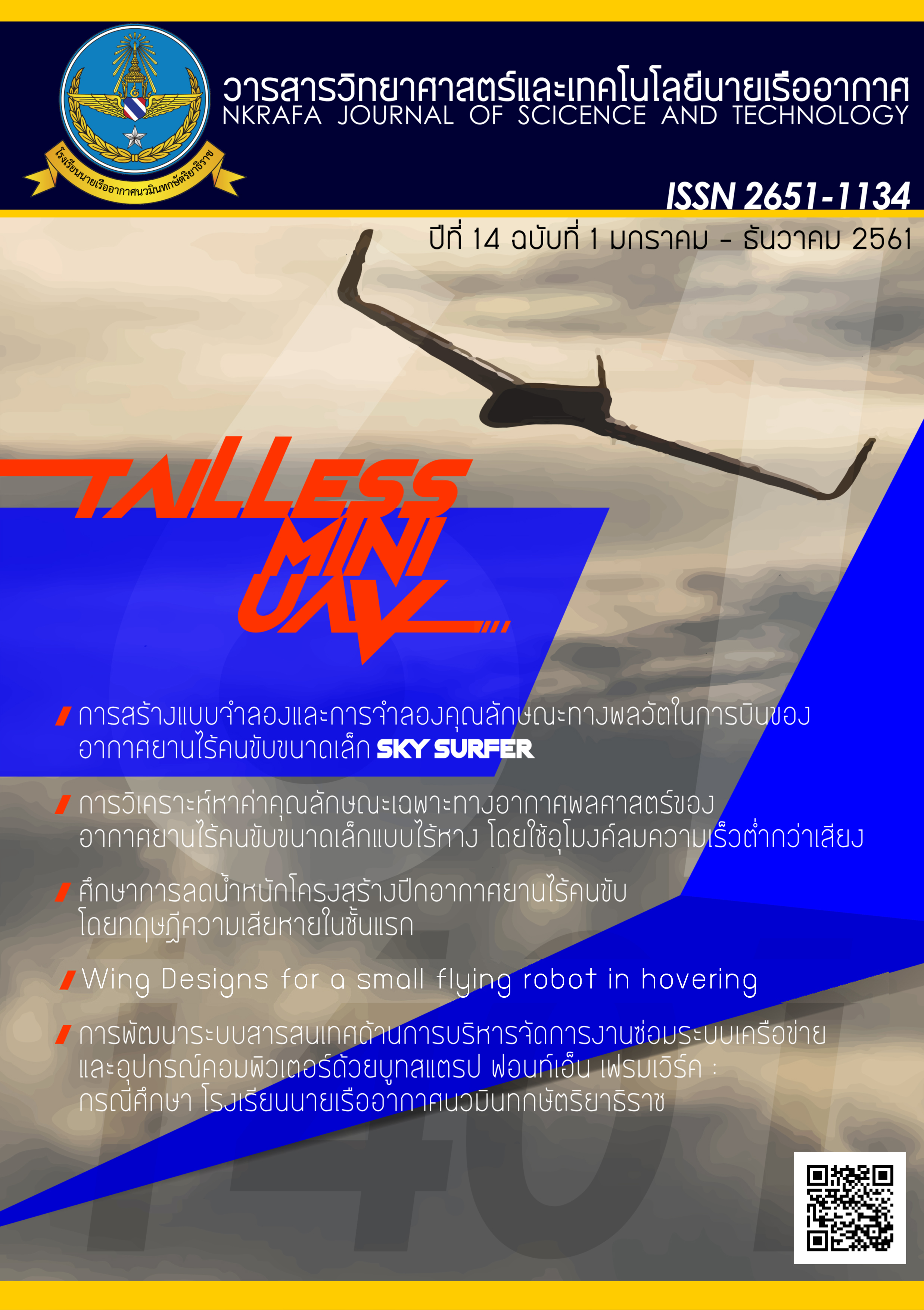Aerodynamic Investigations of Tailless Mini UAV by Using Subsonic Wind Tunnel
Main Article Content
Abstract
This paper presents a wind tunnel investigation of aerodynamic characteristics of Tailless Mini-UAV. The tests were performed at low subsonic speeds (Reynolds number -
). The experimental result was then compared and confirmed with numerical results obtain from Computational Fluid Dynamics (CFD). The experimental result shown that the Tailless Mini-UAV provides high aerodynamic efficiency by up to 22, which is desirable to enhance the aerodynamic performance in terms of both range and endurance. In additions, the Tailless Mini-UAV was also statically stable in longitudinal axis. In comparison with the numerical solutions, good agreement was observed for both lift and drag coefficient.
Article Details
- Content and information in articles published in NKRAFA Journal of Science and Technology are comment and responsibility of authors of articles directly. Journal editorial do no need to agree or share any responsibility.
- NKRAFA Journal of Science and Technology Articles holds the copyright of the content, pictures, images etc. which published in it. If any person or agency require to reuse all or some part of articles, the permission must be obtained from the NKRAFA Journal of Science and Technology.
References
[2] Karakas, H., Koyuncu, E., & Inalhan, G. (2013). ITU Tailless UAV Design. Journal of Intelligent and Robotic Systems, 69: 131-146.
[3] Jiajan,W. (2016). Aerodynamic Investigations of Low Speed Tailless Mini Unmanned Aerial Vehicle. Journal of Applied Mechanical Engineering, 40: 62-47.
[4] Barlow, Jewel, B., Rae, William, H., &Pope, A. (1999). Low-Speed Wind Tunnel Testing. New York: Wiley & Sons.
[5] Coleman, H.W., & Steele, W.G. (1989). Experimentation and Uncertainty Analysis for Engineers, New York: Wiley & Sons.
[6] Boschetti, P. J., Cárdenas, E. M., & Amerio, A. (2008). Increasing the Lift-Drag Ratio of an Unmanned Aerial Vehicle using Local Twist. Journal of Aircraft, 45(1): 10-15..


